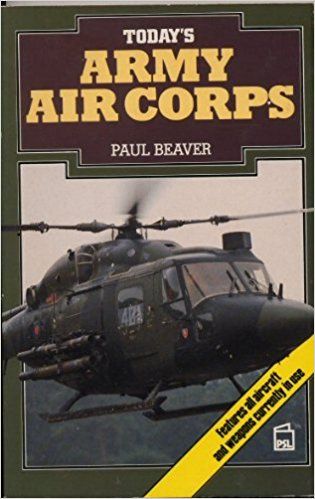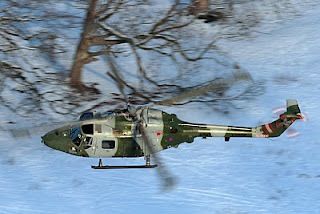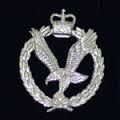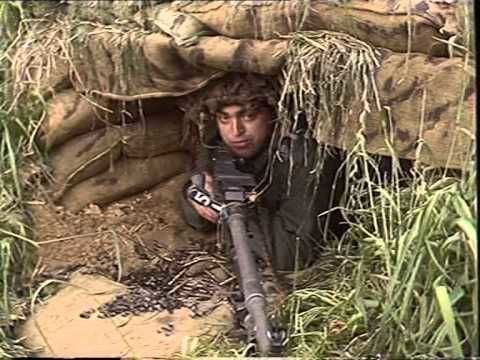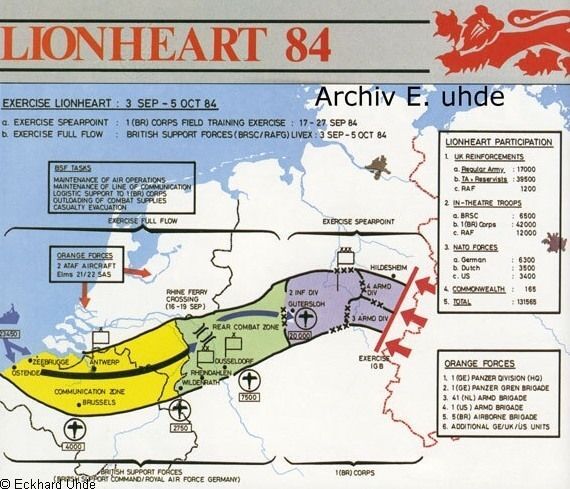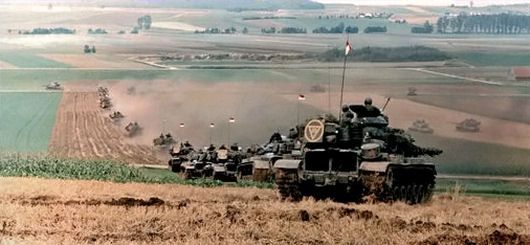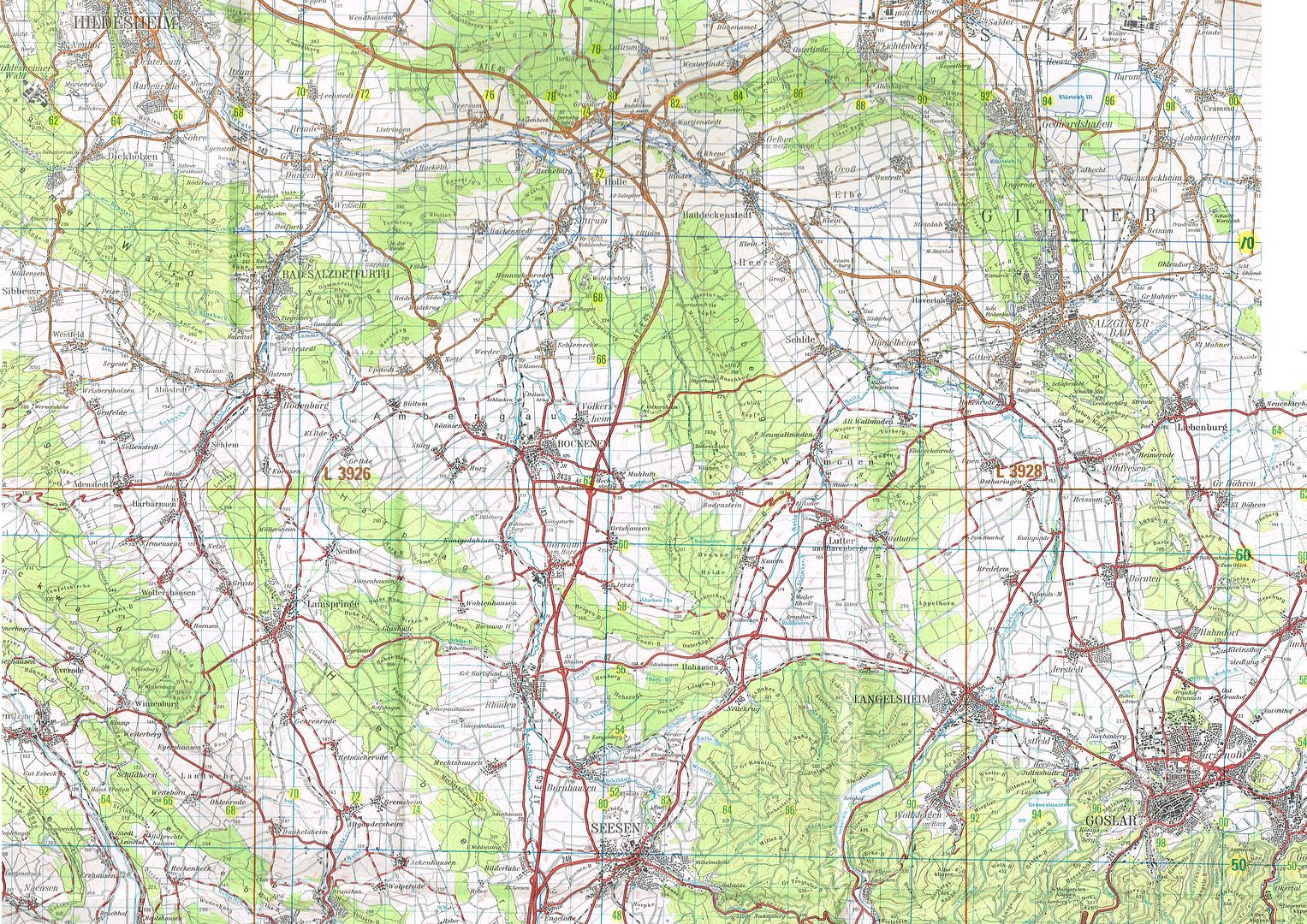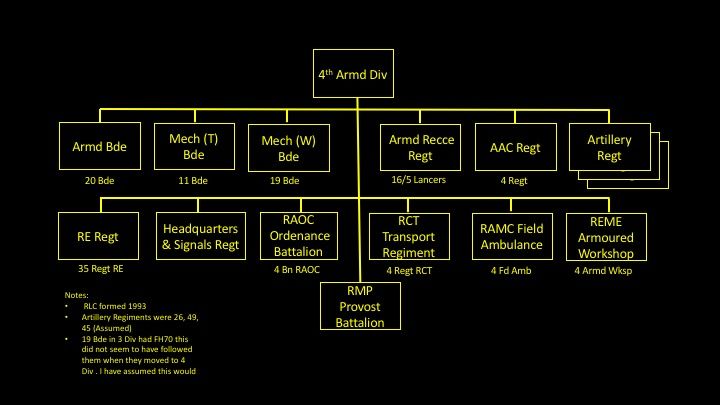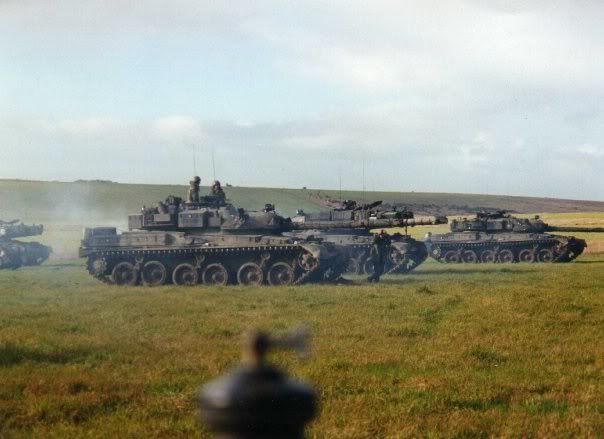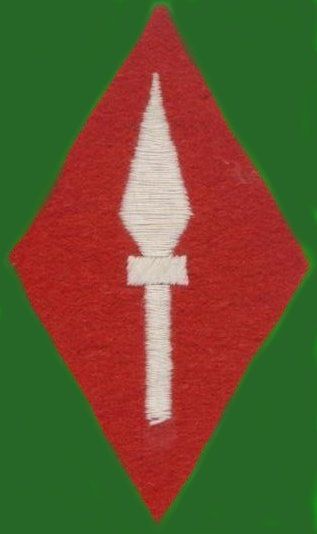The
1 Br Corps deployment zone sits between Hanover in the North to Einbeck in the South. Deployed to the North is 1 GE Corps and to the South covering the more broken terrain of the
Harz Mountains and the
Saurland is 1 Be Corps. The detail of
NORTHAGs deployment was previously covered
here.
The Corps area is dissected by the Rivers
Weser and
Leine and has the Harz mountains on its Southern boundary and the
Teutoburger Wald to its rear. The city of
Hieldesheim sits in the center of the Corps area of responsibility with the ground to the south of Hieldesheim being more broken and to the North more open. The Corps sits astride an Axis of Advance to the
Ruhr industrial conurbation.

The Corps concept of operations saw a covering force fighting a delaying action from the Inner German Border back to a Main Defensive Position that sat forward of the River Weser and across the River Leine. The covering force battle would buy time for the preparation of the MDP and potentially the deployment of units from the UK if this had not happened in transition to war. To the rear was the reserve Division with the primary task of launching a counterstroke into the advancing Soviet Armies once the main axis of advance had been identified and this would create the conditions for a counter offensive by the NORTHAG reserve to restore the Inner German Border.

- The Covering Force was provided by 2 Armoured Reconnaissance Regiments from 1 and 4 Divisions together with 644 Squadron AAC. The Recce Regiments at this time were 1st The Queens Dragoon Guards and The 16/5th Queens Royal Lancers. They were effectivly under command 1 Br Corps in this phase.
- The Northern MDP Division was provided by 1st Armoured Division covering the more open ground South of Hanover and North of Hildershiem.
- The Southern MDP Division was provided by 4th Armoured Division deployed in the Southern part of the corps area covering the more broken around the Sibbessa gap.
- The Parachute Regiment Group deployed to Hildershiem in the centre of the area and I would imagine they intended to stay put regardless of the developing situation. Hildersheim and the Parachute Regiment Group came under command of 1st Armoured Division.
- Corps Reserve was provided by 3rd Armoured Division. The corps reserve supplied its reserve Brigade to enable the withdrawal of the covering force through the main defensive position by securing crossing points over the Rivers forward of the Leine. Once the covering force had withdrawn 3rd Division's reserve Brigade would join the rest of the Division West of the Weser and launch its counter stroke.
- The Corps Rear area was secured by 2nd Infantry Division, which also included 24 Airmobile Brigade which would primarily be used for counter penetration tasks into the forward areas and could be deployed in support of either the MDP or Covering Force Battle. Of Interest during Ex Lionheart in 1984, the German 53 Heimatschutz Brigade reinforced 2nd Division and 24 Brigade (at the time a Mech (W) Brigade) was released for deployment else where.
- The Rear Combat Zone and Communication Zone sat behind the Corps rear boundary.
Behind the forward deployed Corps of NORTHAG sat
III US Corps, once it had completed its deployment from the US it would conduct subsequent operations to restore the line of the Inner German Border.
By the close of the Cold War NORTHAG reserve included a multinational Airmobile division that included:
- UK 24 Airmobile Brigade
- Ge 255 Luftlande Brigade
- Be Para Commando Regiment
Over the duration of the Cold War I suspect this plan changed a number of times but this is what I intend to use as the operational context for games involving my British forces.
The Essentials of the 1 BR Corps plan were therefore:
- Covering Force - Recce and 644 Squadron AAC Forward
- Main Defensive Position Battle including Divisional Covering Force and Divisional counter attacks/penetration.
- Counter Penetration by 24 Brigade (88/89) after formation of Brigade and prior to move to multinational Airmobile Division.
- Counter Stroke - 7 Panzer Division & 3rd Armoured Division
The unifying purpose being to achieve the destruction of the first operational echelon between the R Weser and the R Leine.
UK based components would deploy during transition to war or in the opening stages of the conflict, these included.
- 3rd Armoured Divisions Recce Regiment
- 4th Armoured Divisions 19 Infantry Bde
- 665 Sqn AAC
- 2nd Infantry Division
My intent is to set a number of Scenarios within the 4th Armoured Divisions area of responsibility primarily as it had a slightly more diverse force structure than 1 Armoured Division deployed in the more open ground to the North and therefore holds a little more variety in the type of actions and forces that can be used. 19 Brigades deployment area around
Bockenem is shown on the map below.
The Divisions were tailored in their task organisation to their areas of responsibility. The 4th Armoured Division included 2 Armoured Brigades and an Infantry Brigade. The table below outlines exactly what this meant in terms of the detailed composition of the different divisions in 1 Br Corps.
So essentially the 4th Armoured Division was a Mechanised Division with 1 Mech (T) Brigade, 1 Mech (W) Brigade and an Armoured Brigade. The organisation of the 4th Armoured Division was as follows:
The Unit composition and equipment distribution of the Combat and Combat Support units around 1988/89 were as follows:
16/5th Queens Royal Lancers, Divisional Recce Regiment (CVR(T))
4 Regiment Army Air Corps (Lynx/Gazelle)
45 Field Regiment RA (FH70) 19 Bde (Assumed)
26 Field Regiment RA (M109/Javelin) 11 Bde
49 Field Regiment RA (M109) 20 Bde
35 Regiment Royal Engineers (FV 432)
11 Armoured Brigade;
5th Inniskilling Dragoon Guards (Chieftain)
3 Royal Anglian (FV 432)
2 Queens (FV 432)
20 Armoured Brigade;
15/19 Hussars (Challenger)
4/7th Royal Dragoon Guards (Challenger)
1 Royal Regiment of Wales (FV 432) replaced by 1 RIRISH in 1990 (Warrior)
19 Armoured Brigade;
1 Kings Own Scottish Borderers, (Saxon)
2 Royal Anglian, (Saxon)
1 Staffords, (Saxon)
Royal Hussars (Chieftain, Less 1 Sqn to UKMF)
Engineers and artillery would tend to be attached to the brigades, recce squadrons could be attached to brigades but tended to operate as a divisional asset along with the AAC Regiment. Additionally the division would have a squadron from 32 Armoured Engineer Regiment with troops being attached to brigades as required.
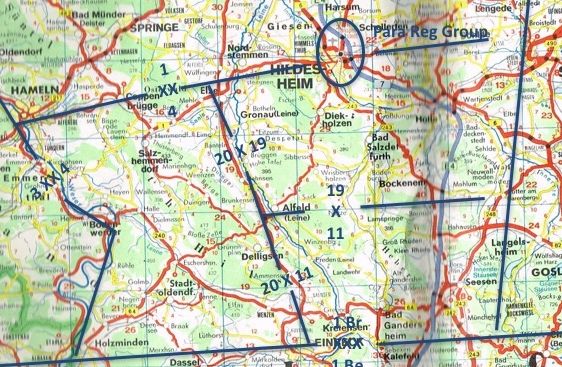
The Divisions operational concept had the Armoured Brigade and the Armoured Recce Regiment deployed forward as a covering force. The Armoured Recce Regiment being initially under command of 1 Br Corps as a component of the Corps covering force. The 2 Mechanised Brigades then developed and manned the Main Defensive Position with the covering force withdrawing back into reserve where it would be reconstituted by replacement crews and vehicles from the Armoured Delivery Regiment. The AAC regiment would take a very active role in counter penetration as the ground lent itself well to HELARM anti tank ambushes. I expect it would have been active in both the divisions covering force battle and the MDP battles.
19 Brigade the Mech (W) Brigade would deploy in the North of the area around the Bockenem bowel at the entrance to the Sibbessa gap and 11 Brigade, the Mech (T) Brigade to the South around Bad Gandershiem and Seesen.
20 Brigade would provide both the covering force and the reserve.
References:
Web:
M136 Exercise Picture Archive
British Army Units since 1945
Fire and Furry Cold War Orbats and Modern Resources
Staff Rides 1Br Corps Material and Maps
Books:
The Royal Armoured Corps in The Cold War
Other Posts of Interest:
ORBAT 1980s British Battle Group,
Part 1,
Part 2,
Part 3,
Part 4,
Part 5,
Part 6,
Part 7
ORBAT - 1980's British, Army Air Corps Aviation Regiment
ORBAT - The RAF in Germany in the 1980s
ORBAT - 1980's British BG, NATO and BAOR Reinforcement, Part 1 General
ORBAT - 1980's British BG, NATO and BAOR Reinforcement, Part 2 The Infantry Brigades
ORBAT - Soviet Task Org, Fronts against NORTHAG
